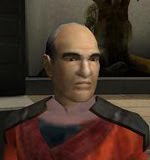This post will introduce you to some basic Hawaiian geography. The Hawaiian island chain consists of 137 islands, islets, and atolls reaching in a northwest-southeast span of 1500 miles in the middle of the Pacific Ocean. There are eight major islands: O'ahu, Hawai'i, Maui, Kaua'i, Moloka'i, Lana'i, Ni'ihau, and Kaho'olawe.

O'ahu
O'ahu is the most populous of the Hawaiian islands. The state capital, Honolulu, is located on its southern shore. Due to its mix of beautiful beaches and city life, it also attracts the most tourists. Some popular tourist destinations include Waikiki, with its busy beaches and the highest concentration of hotels (and souvenir shops); Hanauma Bay, a very popular snorkel spot; Pearl Harbor, for those looking for a little WWII history; Diamond Head, an easy hike with a great view; and the North Shore beaches, famous as world-class surf spots.
Hawai'i, The Big Island
The island of Hawai'i is the largest of the Hawaiian islands. Therefore, largely to avoid confusion over whether one is referring to the island or the whole state, it is generally called simply "The Big Island" by locals. As the newest of the islands, it is the only one of the major islands with active volcanoes, and it is thus still growing. The main tourist attraction on this island is Hawai'i Volcanoes National Park, where one can see the Kilauea volcano and its Halema'uma'u caldera, walk through lava tubes, and, if lucky, see some red hot lava (from a safe distance). The island is also home to Akaka Falls, the town of Hilo, and Kona, where they grow Kona coffee.
Maui
Relatively populous and a popular tourist destination, Maui has two main volcanoes. The larger of the two, Haleakala, reaches 10,000 ft high and is a popular tourist destination. Visitors can drive to the top and watch the sun rise, and they can also see the rare plant silversword, which is found only on the slopes of Haleakala. Hana, a tiny town on the easternmost shore of the island, is also a popular spot to visit, not for the town itself but for the narrow windy road that leads to it along which are numerous beautiful swimming holes and beaches.
Kaua'i
Another popular tourist stop, Kaua'i boasts some of the most beautiful beaches in the world; it is also a popular stop for filmmakers who want a nice beach in their pictures. Waimea Canyon in the center of the island has striking views, and Na Pali coast is a long series of breathtaking cliffs, best viewed from the sea.
Moloka'i
Now we're getting to the less populous islands which are also less popular as tourist destinations (and I have never visited them). I don't know much about Moloka'i other than it had a leper colony at some point. As far as sight-seeing goes, its pristine nature in comparison to the islands described above makes it a lovely place to visit, and it also has the highest sea cliffs in the world.
Lana'i
Lana'i is a small island that in the last century was covered in pineapple plantations, as James Dole (as in Dole Food Company) bought the whole island. Tourism has begun to pick up as the pineapple industry has died down.
Ni'ihau
The smallest of the inhabited Hawaiian islands, Ni'ihau is owned by the Robinson family, and it was recently counted as having a population of 130. There is a small military station on the island, but generally only relatives of the owners, invited guests, and limited groups of tourists may visit the island. The island inhabitants are known for making beautiful shell leis.
Kaho'olawe
The smallest of the main 8 islands, Kaho'olawe was once used as a bombing range by the U.S. military. Now controlled by the state, people are working on restoring it.
That's all the essential geography that comes to mind. Tomorrow I'll have an essential history of Hawai'i.
















3 comments:
Oooh awesome. Can't wait for the history! I read a book when I was younger.. a historical fiction about a Hawaiian Princess? I can't remember her name and I'm sure it wasn't historically correct, but it was awesome.
How 'bout that -- I always associated the 'big island' with Hawai'i itself. Probably because when I look at maps I see the large mass and miss the rest of the archipelago.
I didn't even know there was an island called O'ahu... oops.
Why isn't the largest island more populated? Because of volcanic activity?
Or rather, why did they all settle on the smaller island of O'ahu?
Hez - A Hawaiian princess? Sounds like a good book! It might at least give an accurate picture of some aspects of the culture, which is cool. I wonder what era it took place in.
Seb - Well, I'm glad to be shedding some light for you.
The ancient Hawaiians settled on all the islands; I'm not sure which was most populous then. I know that Kamehameha III moved his capital to Honolulu in 1845, which may have been the beginning of the city's dominance. But I don't know why he moved his capital to O'ahu.
But I bet that the volcanic activity of the Big Island is a main factor in its lower population, and not just because people might be scared to live next to an active volcano. Because there has been recent volcanic activity, much of the land is covered only by cooled volcanic rock, which is not so suitable for habitation. Younger land that hasn't had time to form soil and thus can't support most vegetation will not support a large population. The Big Island may have as much habitable land as O'ahu (or more, I don't know), but it is probably fragmented around the volcanoes.
Post a Comment